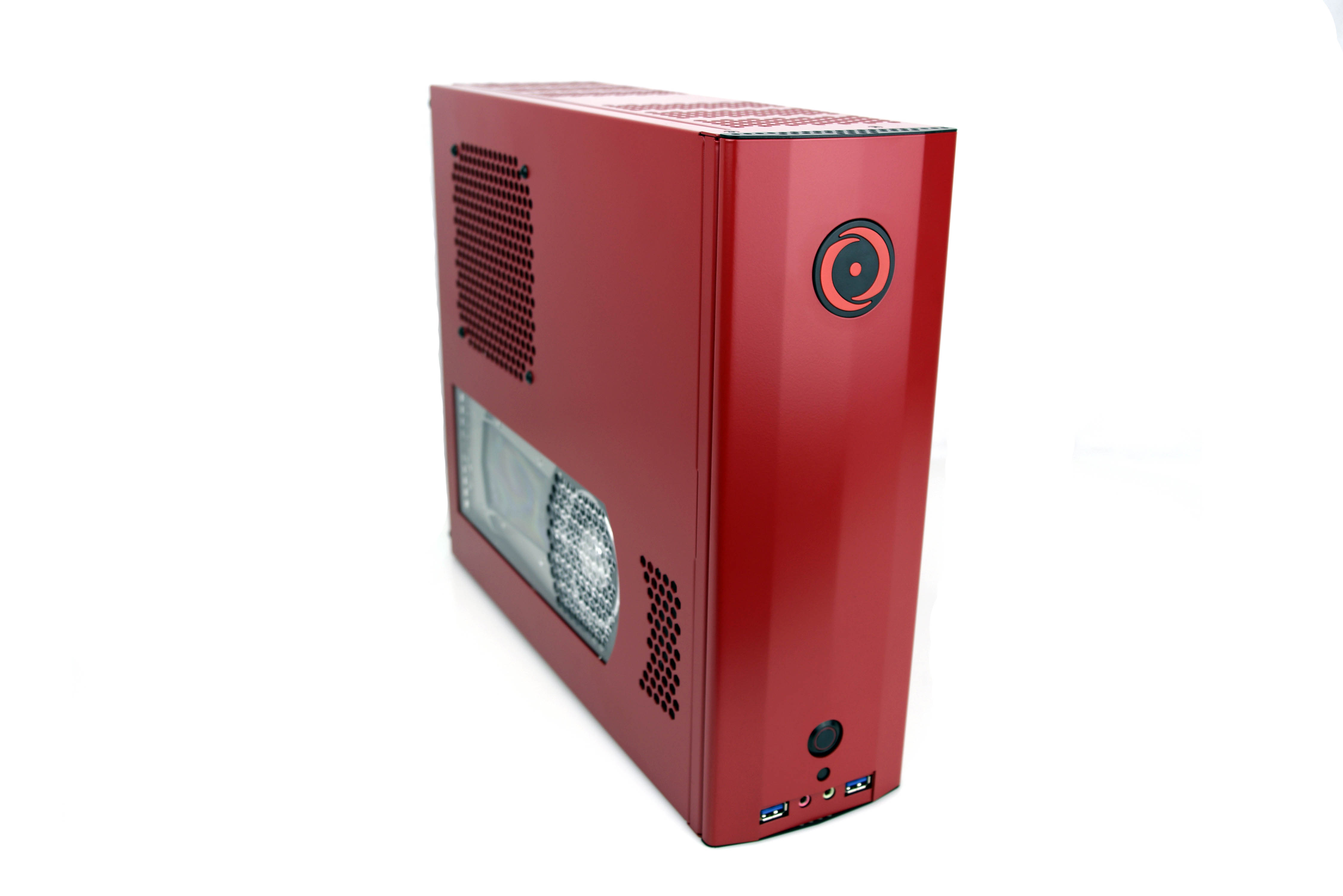Early Verdict
The Origin PC Chronos is a tiny box with some serious gaming horsepower under the hood, achieving top-tier gaming performance at the highest settings and resolutions with an overclocked Intel Core i7-7700K processor and GeForce GTX 1080 Ti graphics card. The gratuitous memory and storage capacity may be a bit overzealous for even a seasoned PC gamer, but this configuration shows us how much of everything can be crammed into a SFF PC no larger than an older gaming console. We can’t recommend it for its practicality or pricing, but if you're looking for a flashy powerhouse rig with multiple color options, a liquid-cooled CPU, premium gaming performance, and an incredibly small footprint, the Origin PC Chronos is an attractive option.
Pros
- +
Petite Yet Powerful
- +
Excellent Thermals
- +
Custom Chassis
Cons
- -
High CPU/GPU Overclock Pricing
- -
Cramped Interior
Why you can trust Tom's Hardware
Introduction & Product Tour
Intel’s 8th-generation desktop processors are upon us, but we’re taking a final look at the (still quite relevant) Z270 chipset and its top-tier Core i7-7700K in Origin PC’s Chronos, a small form factor (SFF) custom gaming rig with a GTX 1080 Ti, CPU liquid cooling, and an eye-catching red and windowed chassis. Origin PC packs in memory and storage capacities, with 32GB of DDR4-2666, a 512GB PCIe NVMe SSD, and a 6TB HDD. This is decidedly above par for most budget gamers, but Origin is clearly aiming this $3,000+ model at the performance-obsessed set.
Specifications
Exterior
The Origin PC Chronos features a matte red finish and LED lighting emanating from its windowed side panel, giving it a definitive wow factor (we’re also partial to the *cough, Tom’s Hardware, cough* tone of red). The window shows off the GTX 1080 Ti and has ventilation holes directly over the GPU’s blower intake, guaranteeing fresh (cool) air for the powerful graphics card. Another vent closer to the front of the chassis allows more air into the case by the front of the GPU, and the CPU’s 120mm radiator is mounted to the same panel (you won’t be able to tear it away freely without removing the CPU cooler entirely).
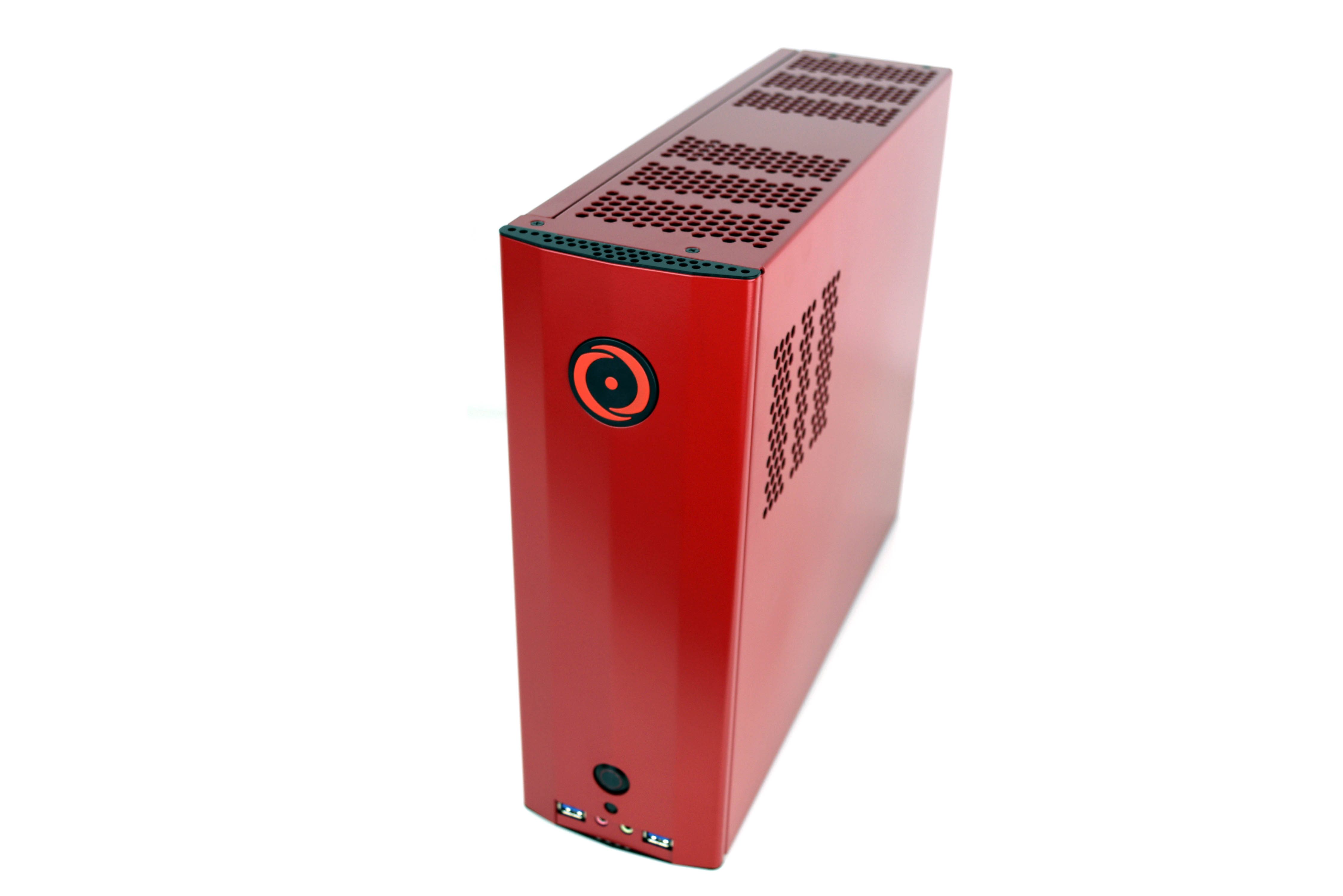
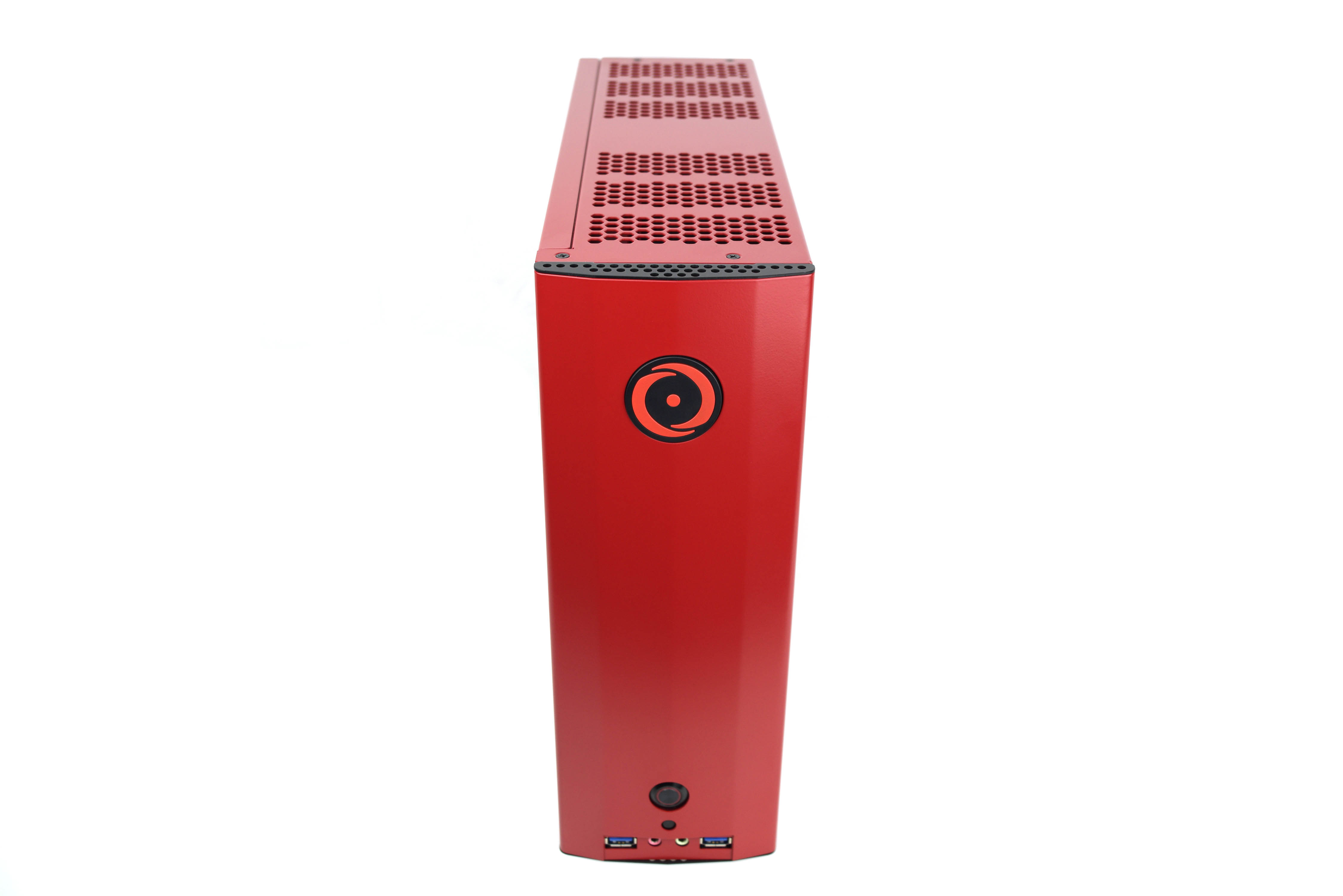
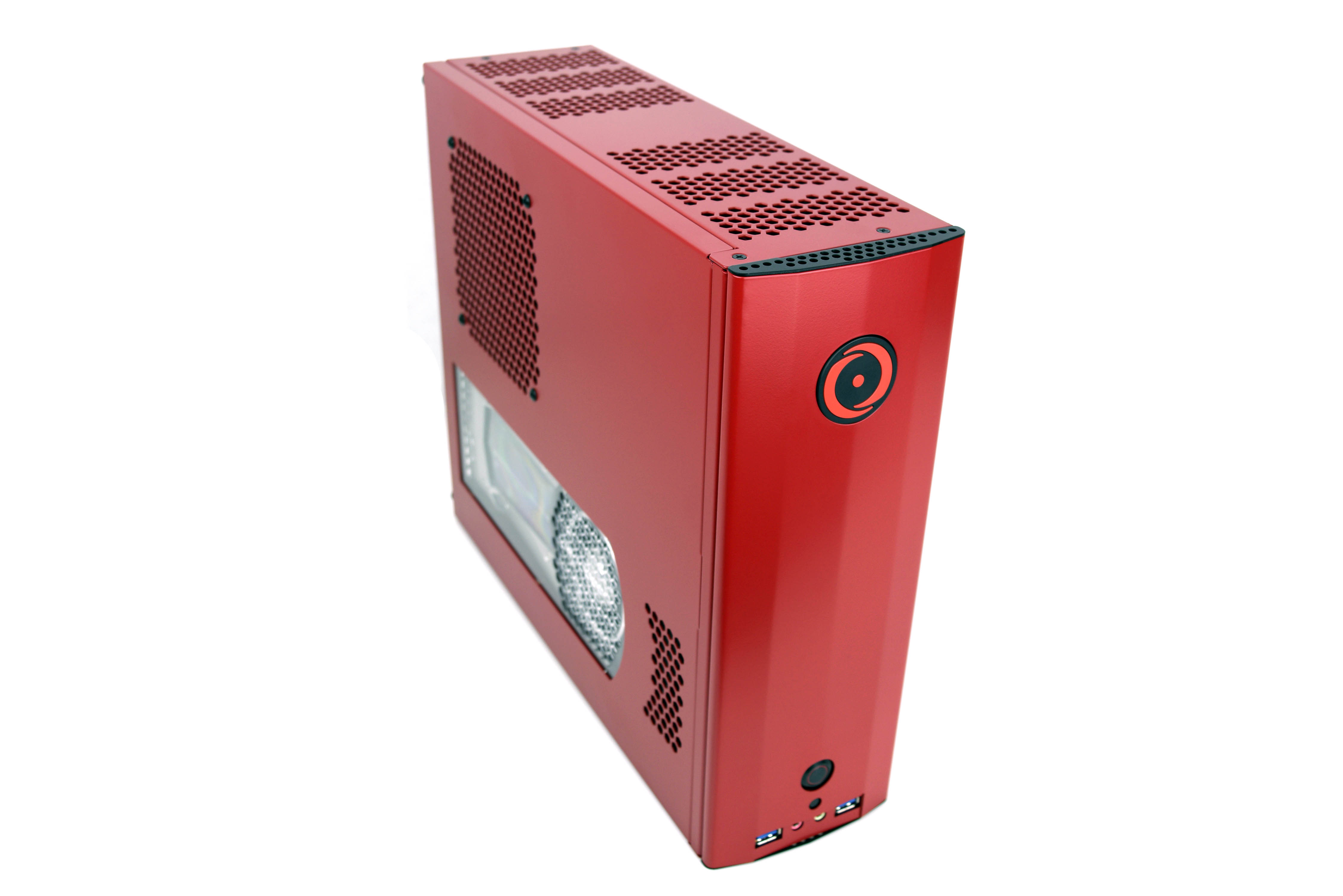
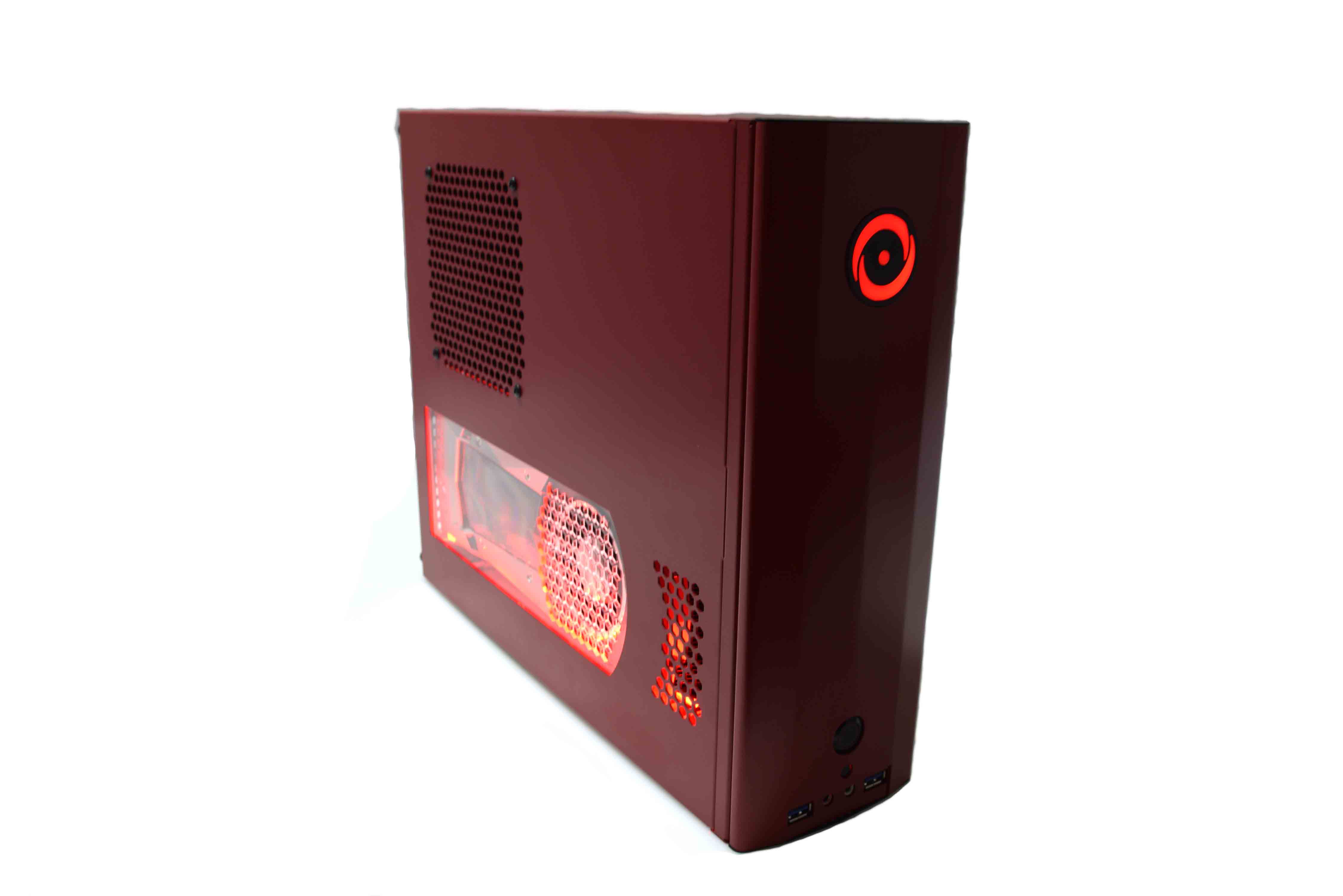
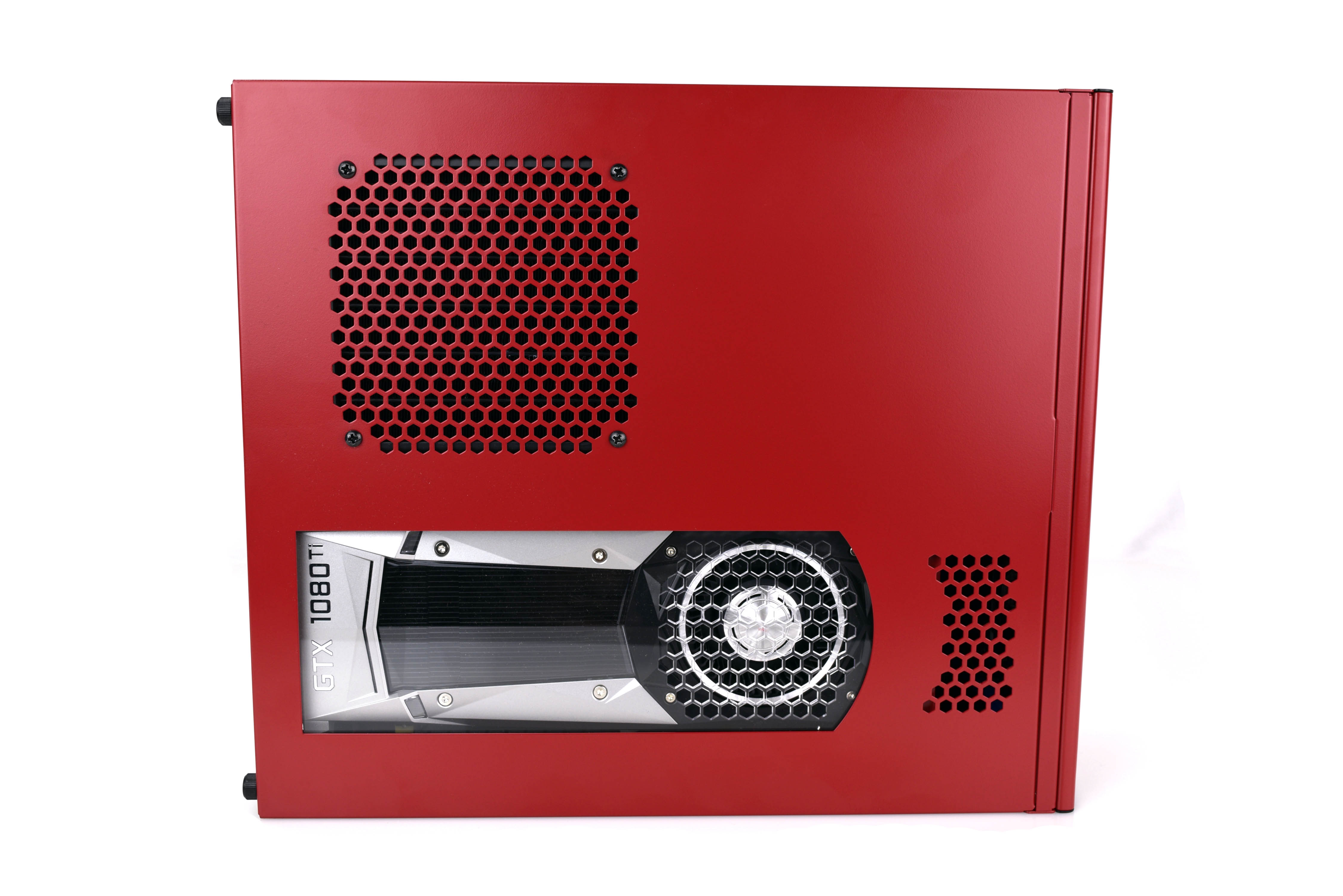
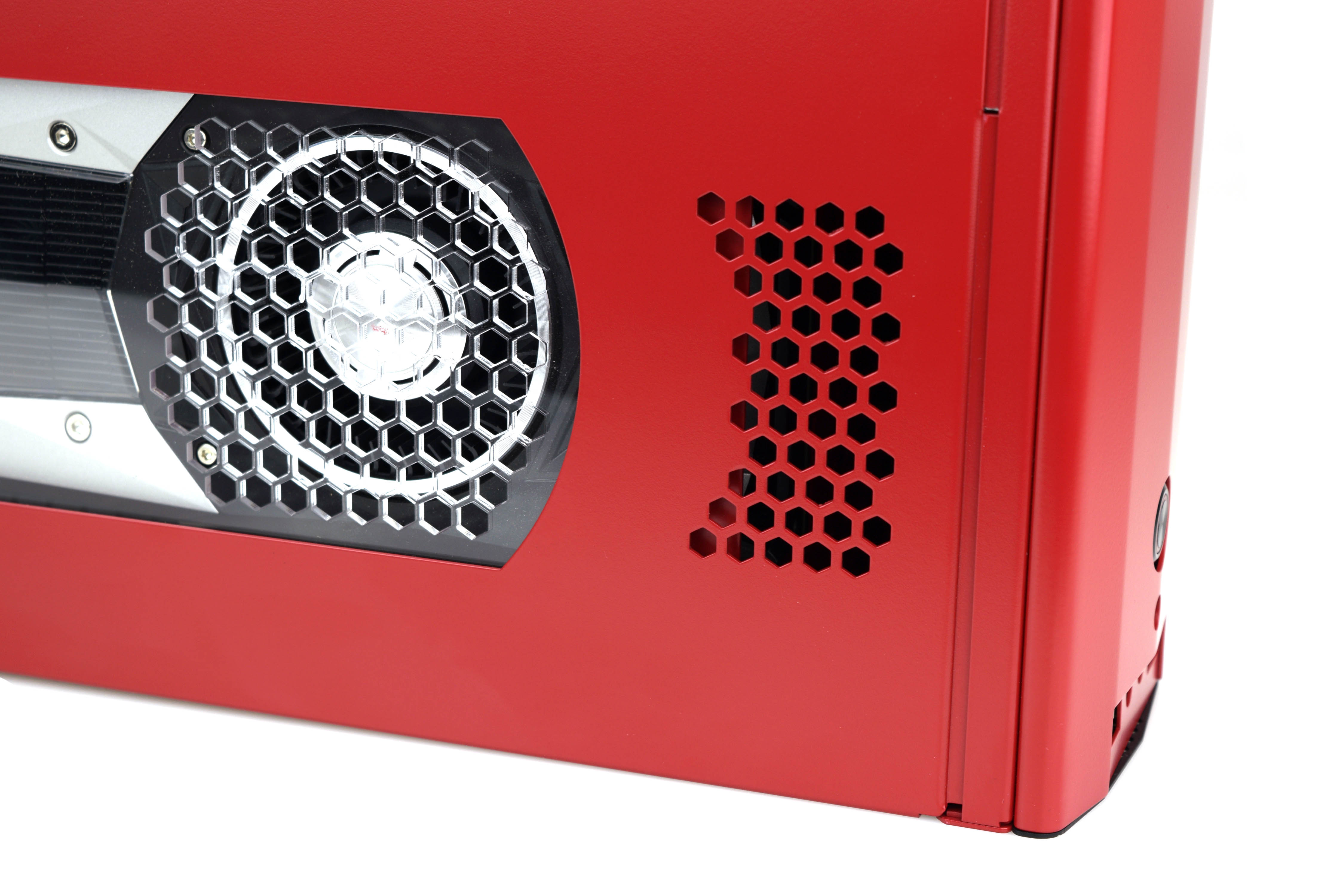
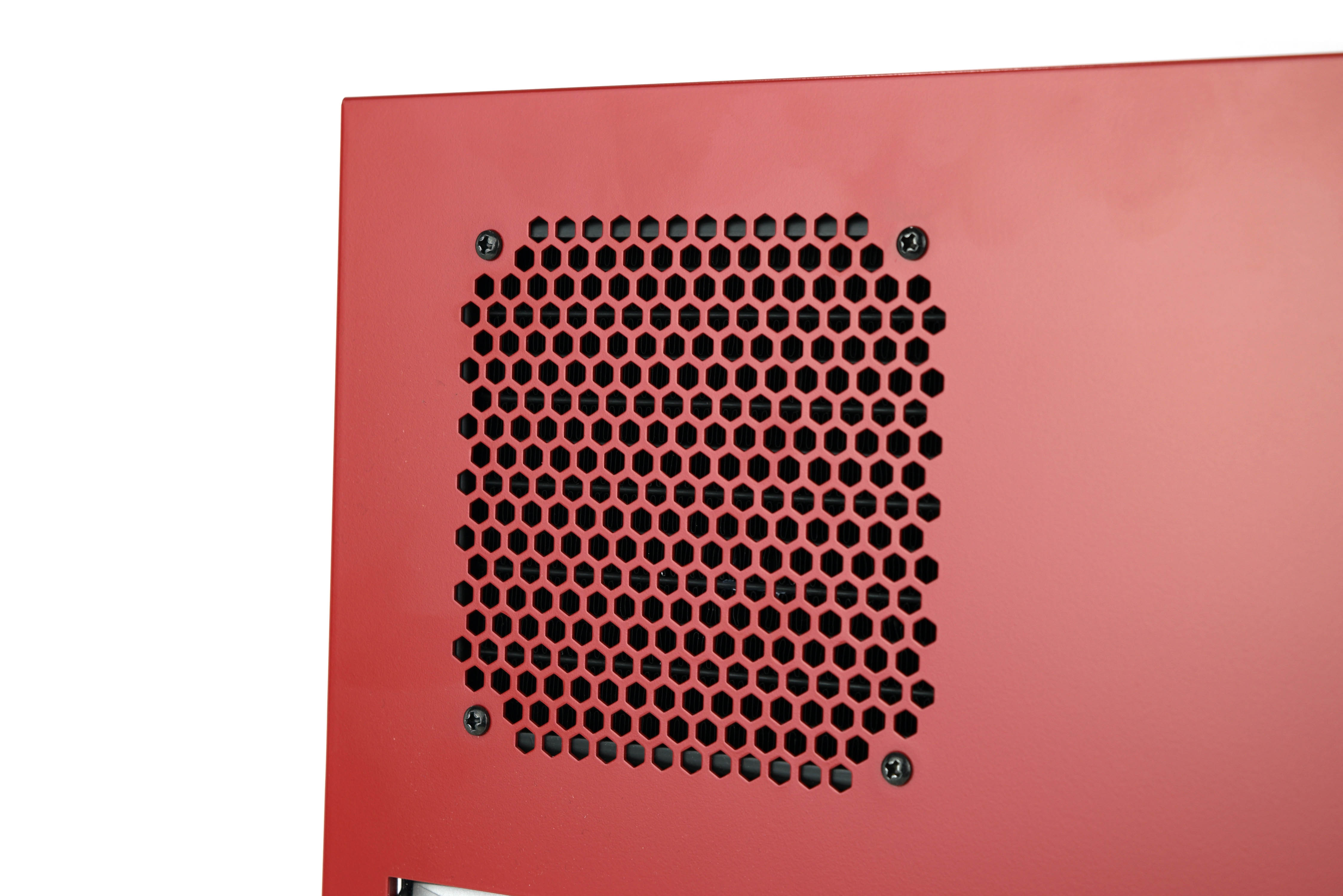
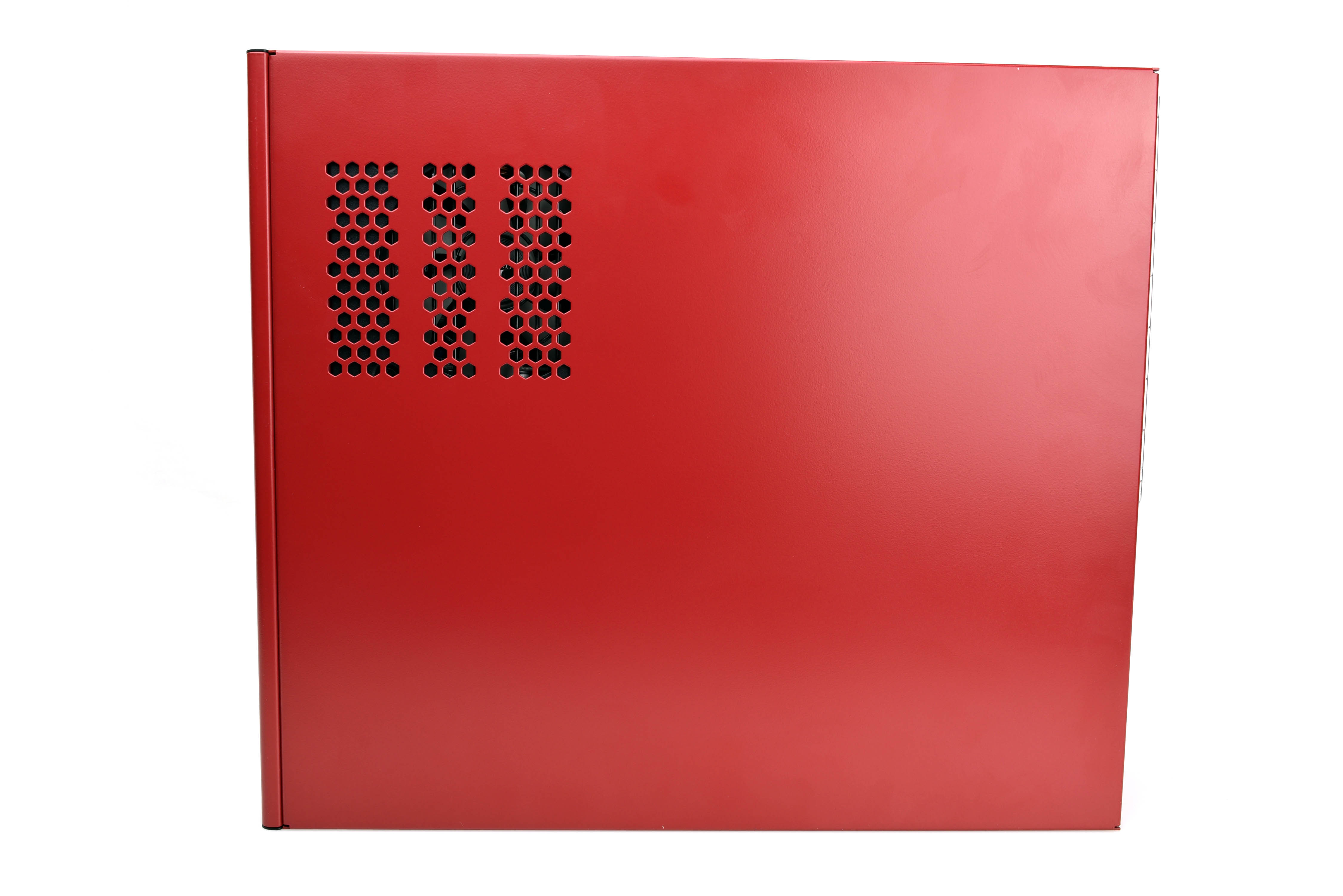
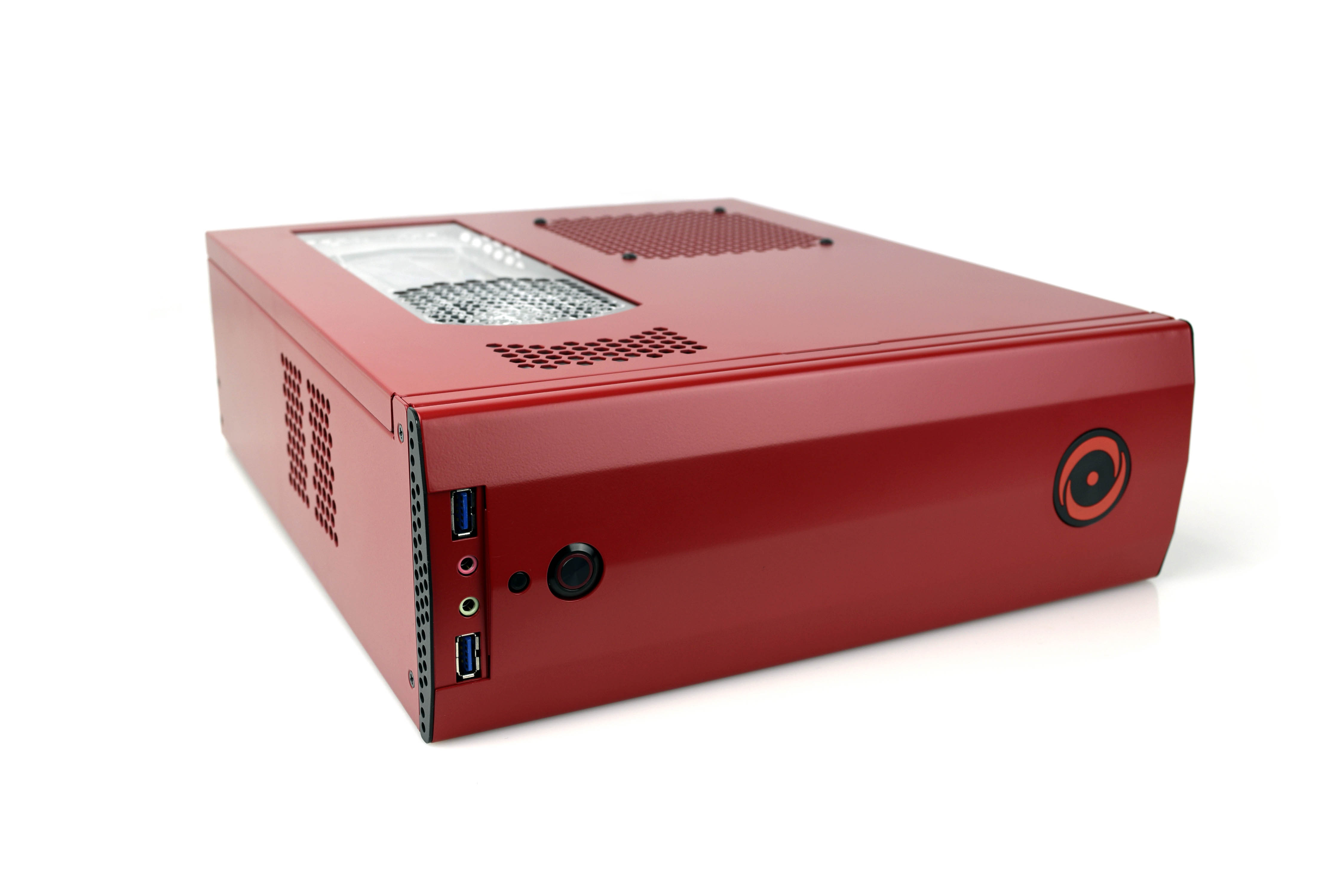
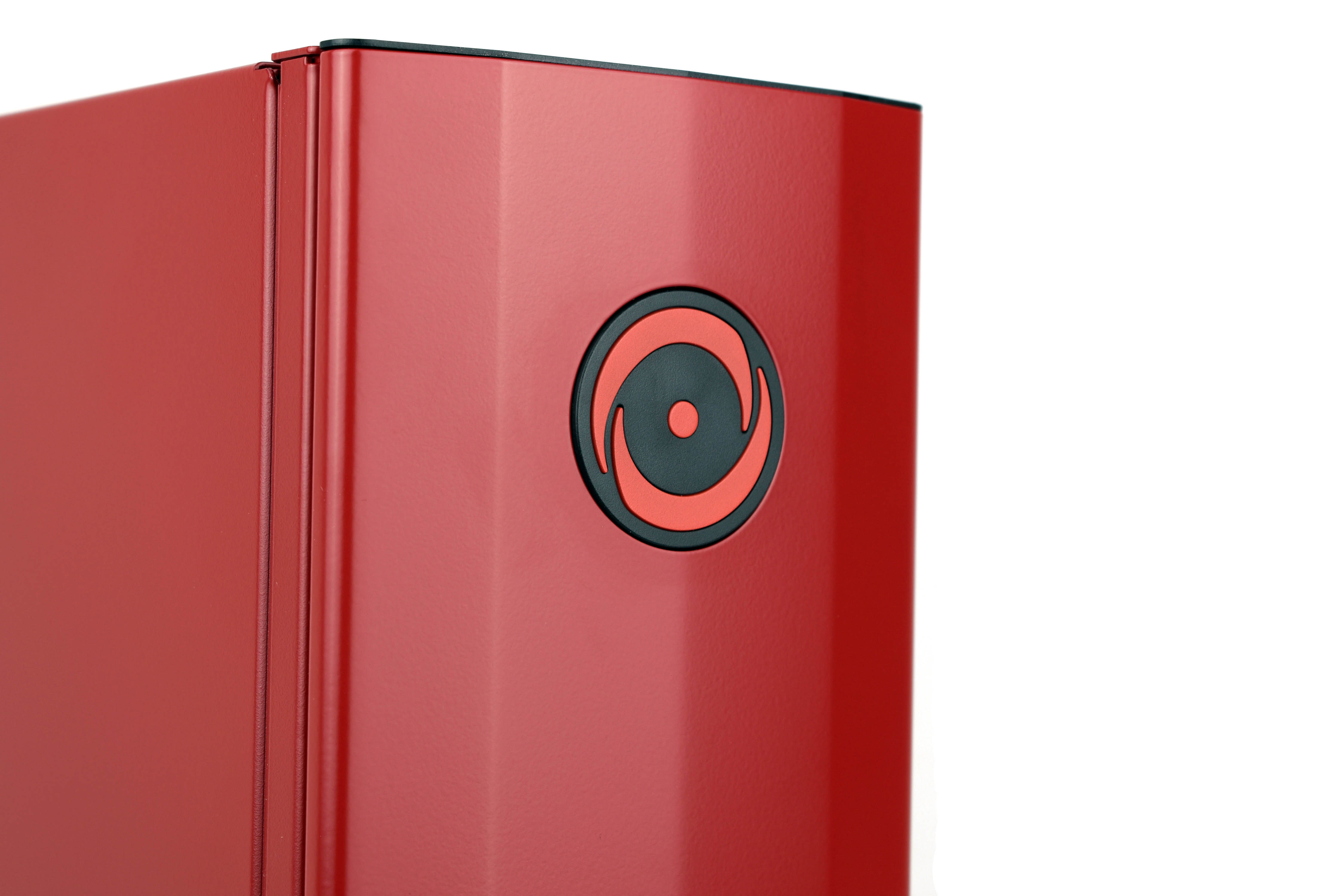
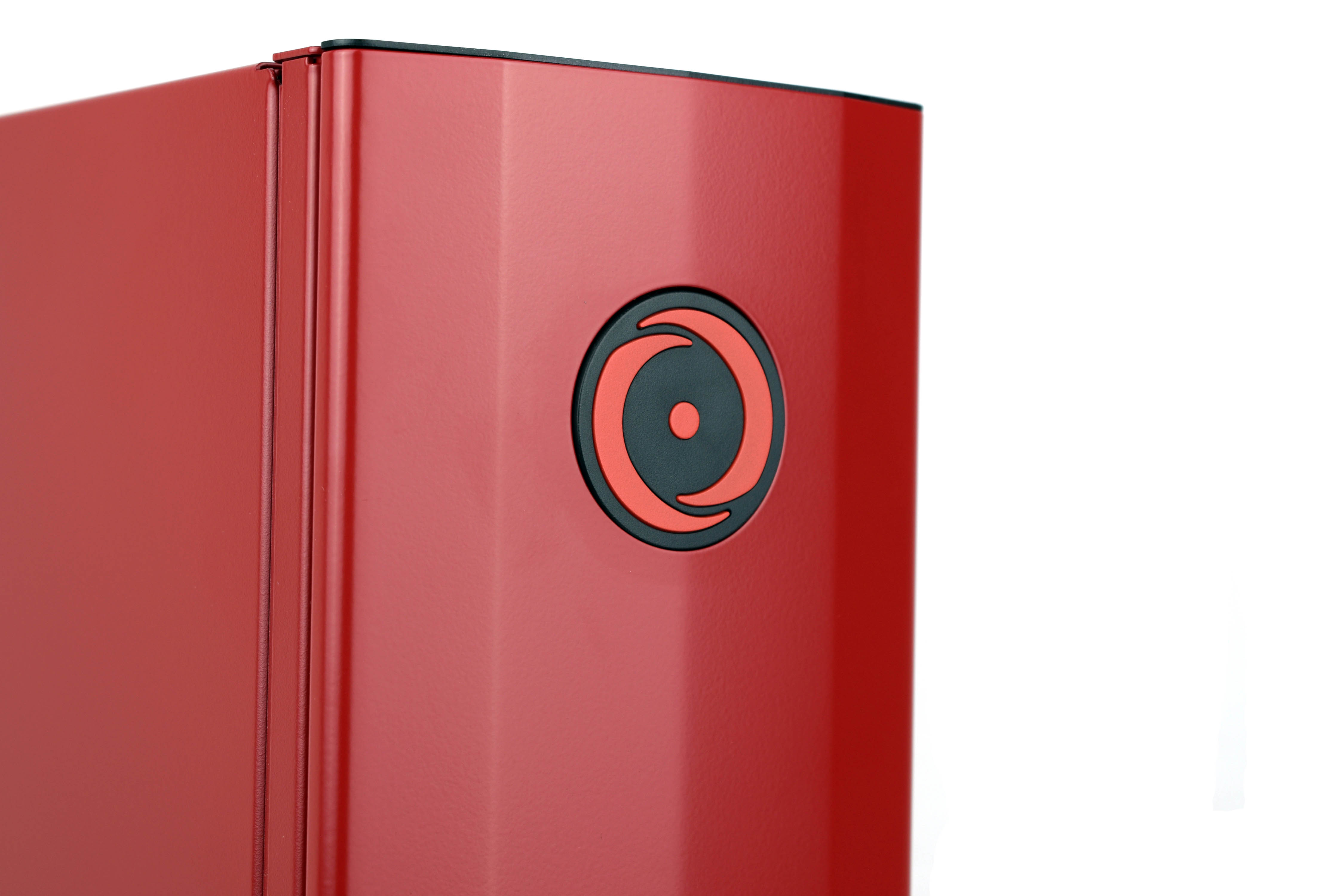
The opposite side of the windowed panel is solid (you can’t open it) with a single air vent for the SFX power supply, which takes cool air in and expels the heat out the side. The chassis can be oriented horizontally or vertically, and the front Origin PC logo can be turned whichever way your preferred orientation requires.
The rear panel is stingy on USB connectivity (like most mini-ITX motherboards), with two USB 3.1 Gen 2 interfaces (Type-A and Type-C), two USB 3.1 (Gen 1) ports, and two USB 2.0 ports. There’s also a PS/2 connector for legacy peripherals or game controllers. Internet connectivity is provided by an Intel i219V gigabit Ethernet port and integrated Intel Wireless-AC 8265. The front panel sports two USB 3.0 ports and audio connectors (headphone-out and mic-in jacks).
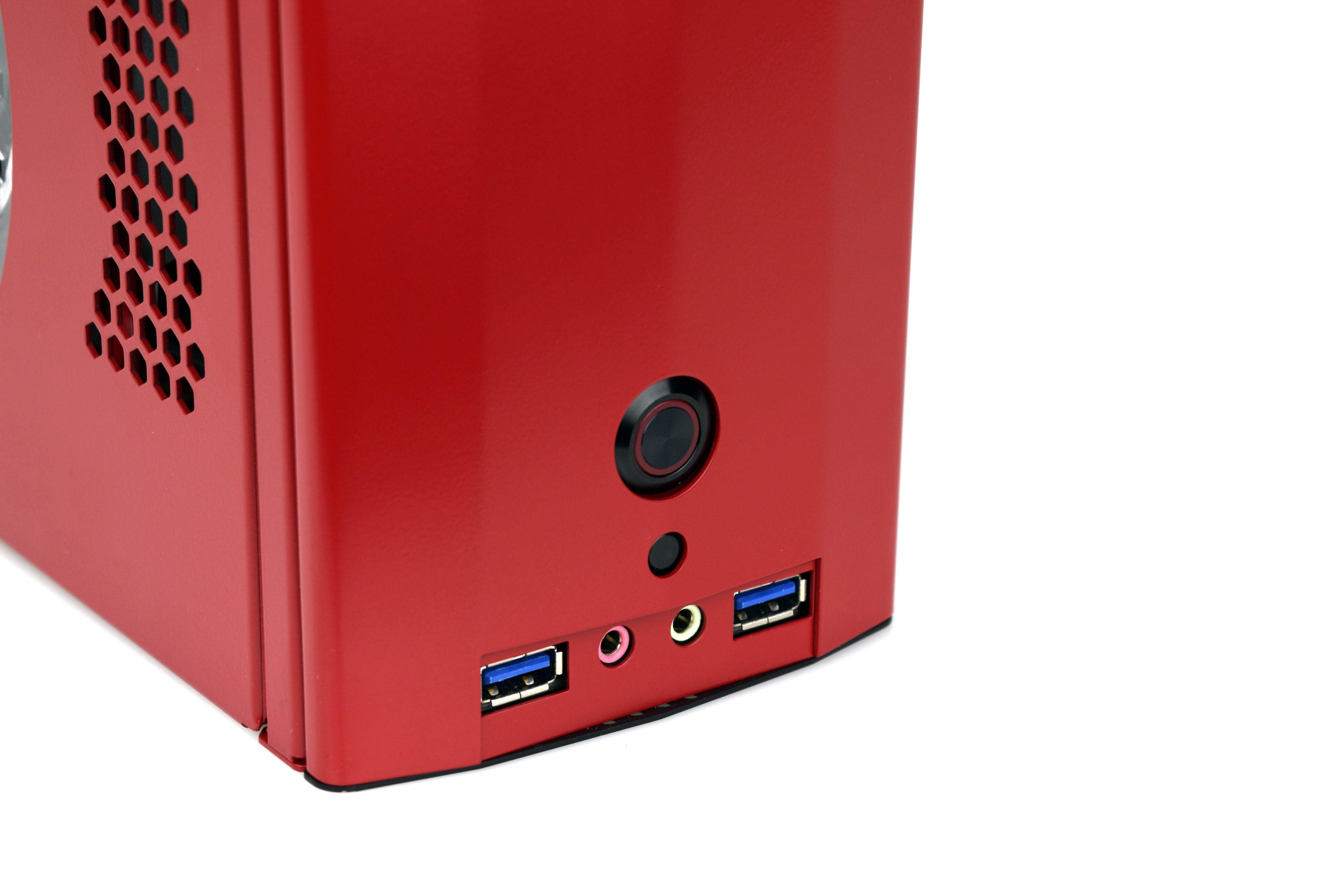
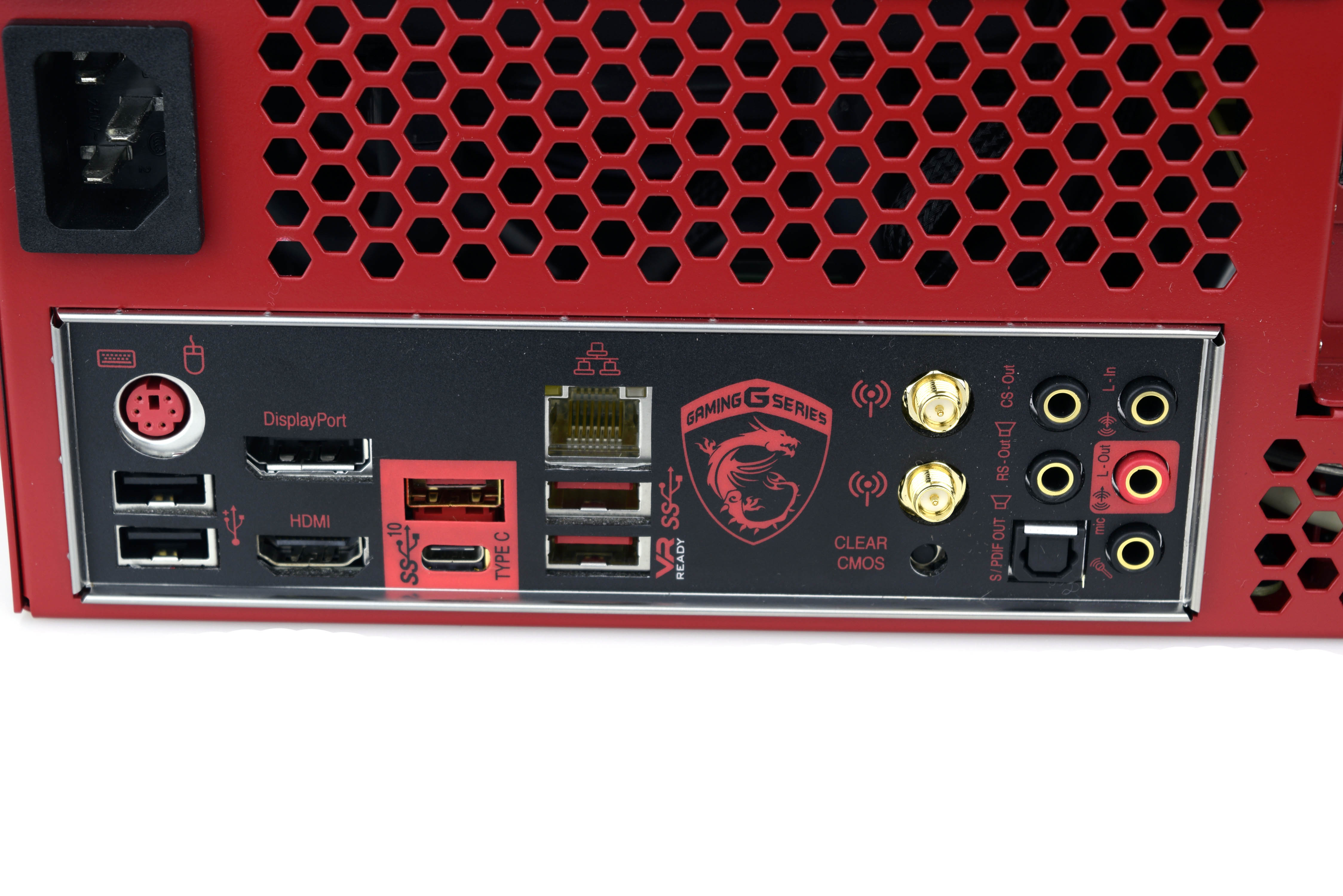
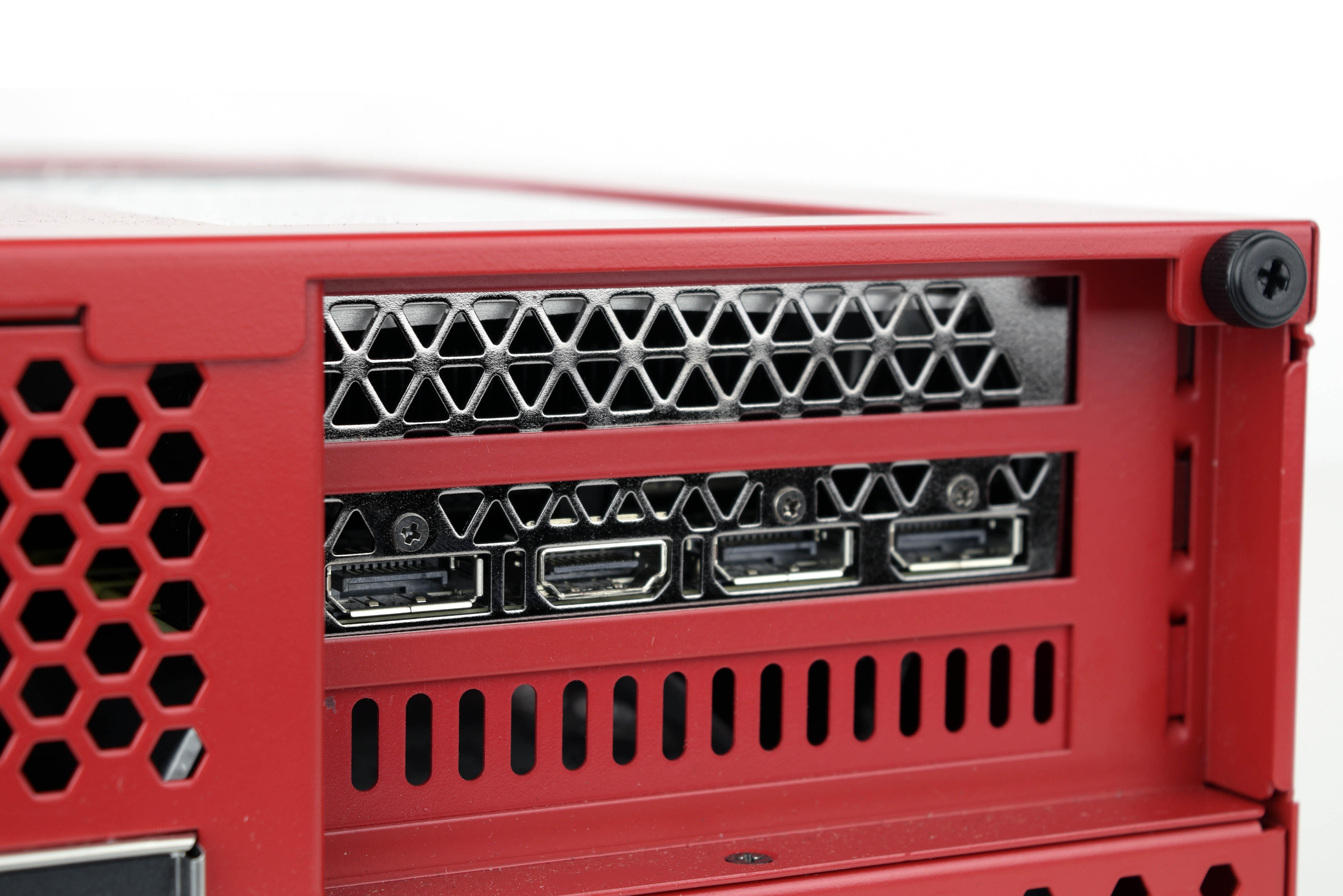
You can connect to a display using the GPU’s HDMI 2.0 or three DisplayPort 1.4 interfaces. There’s also a DisplayPort 1.2 and HDMI 1.4 connections on the motherboard, but you won’t use those unless you’re hooking up more than four screens.
Interior
Removing the windowed side panel reveals that you can’t pull the panel too far away; the 120mm Asetek CPU liquid cooler’s radiator is mounted to the panel. A 120mm slim-profile fan is mounted to the radiator, and the hoses tuck between either side of the pump/CPU mount when the panel is put back in. There’s also an 80mm intake fan on the front of the case, which gets its air from vents on the top and bottom (or left and right, if positioned horizontally) of the chassis' front panel.
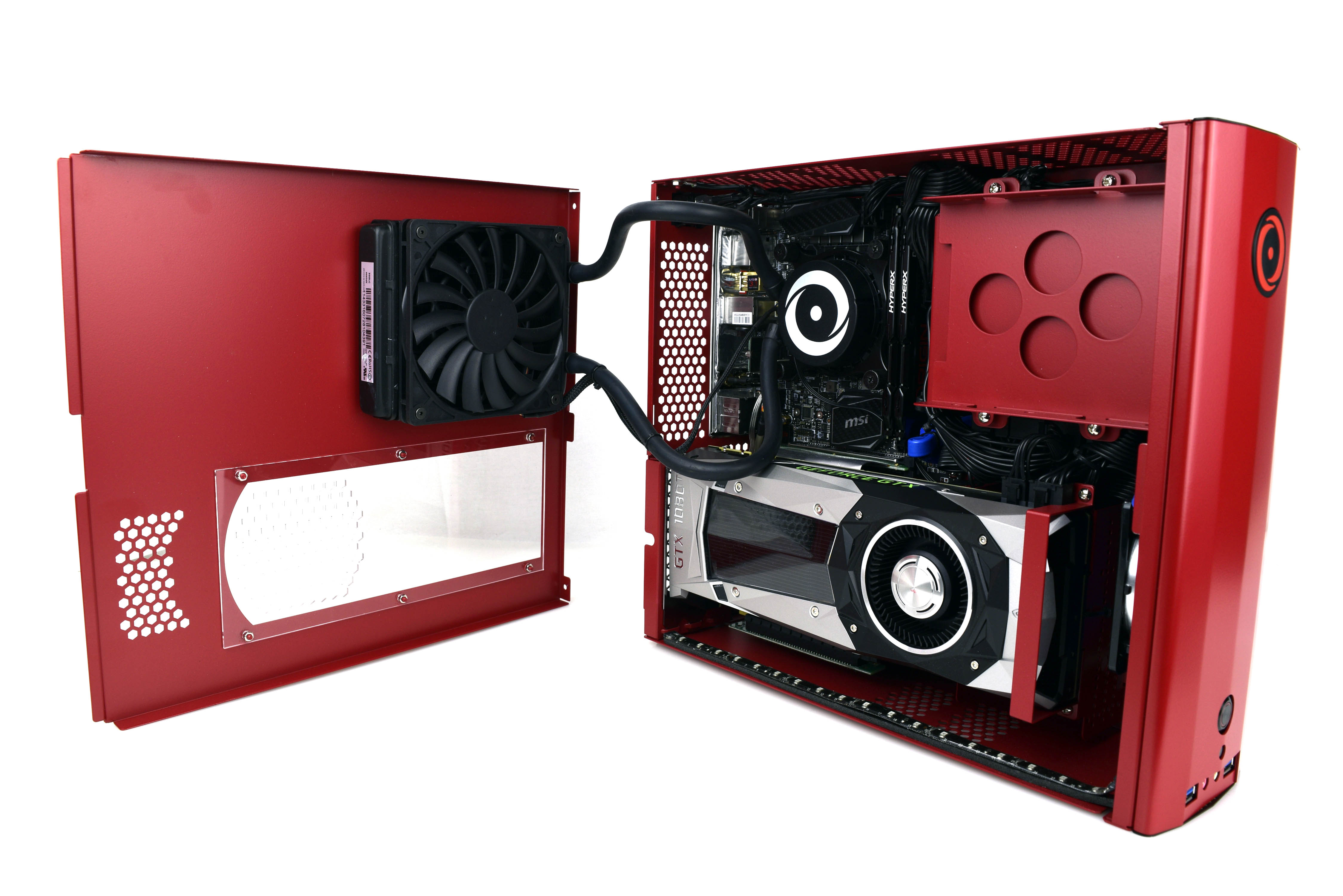
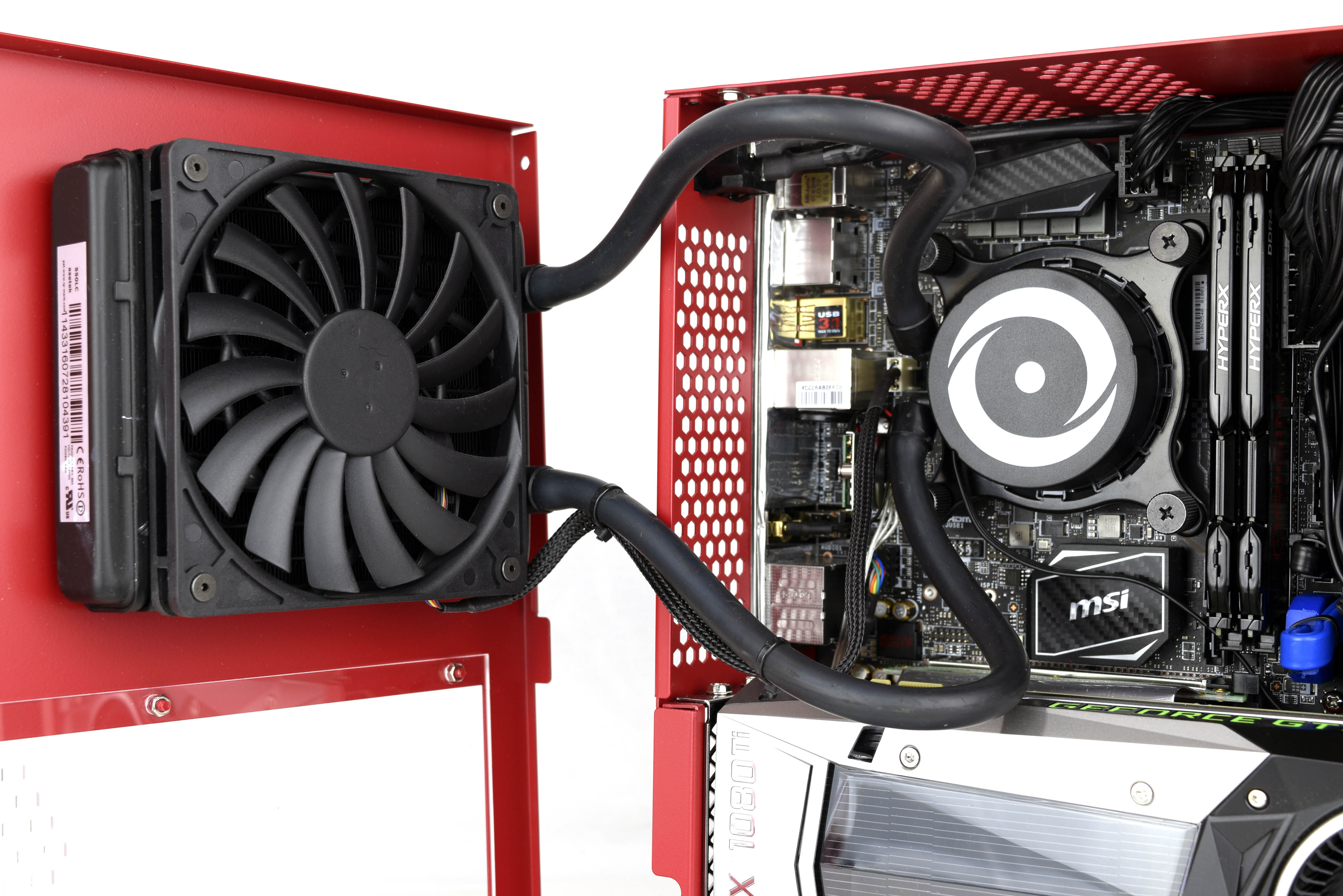
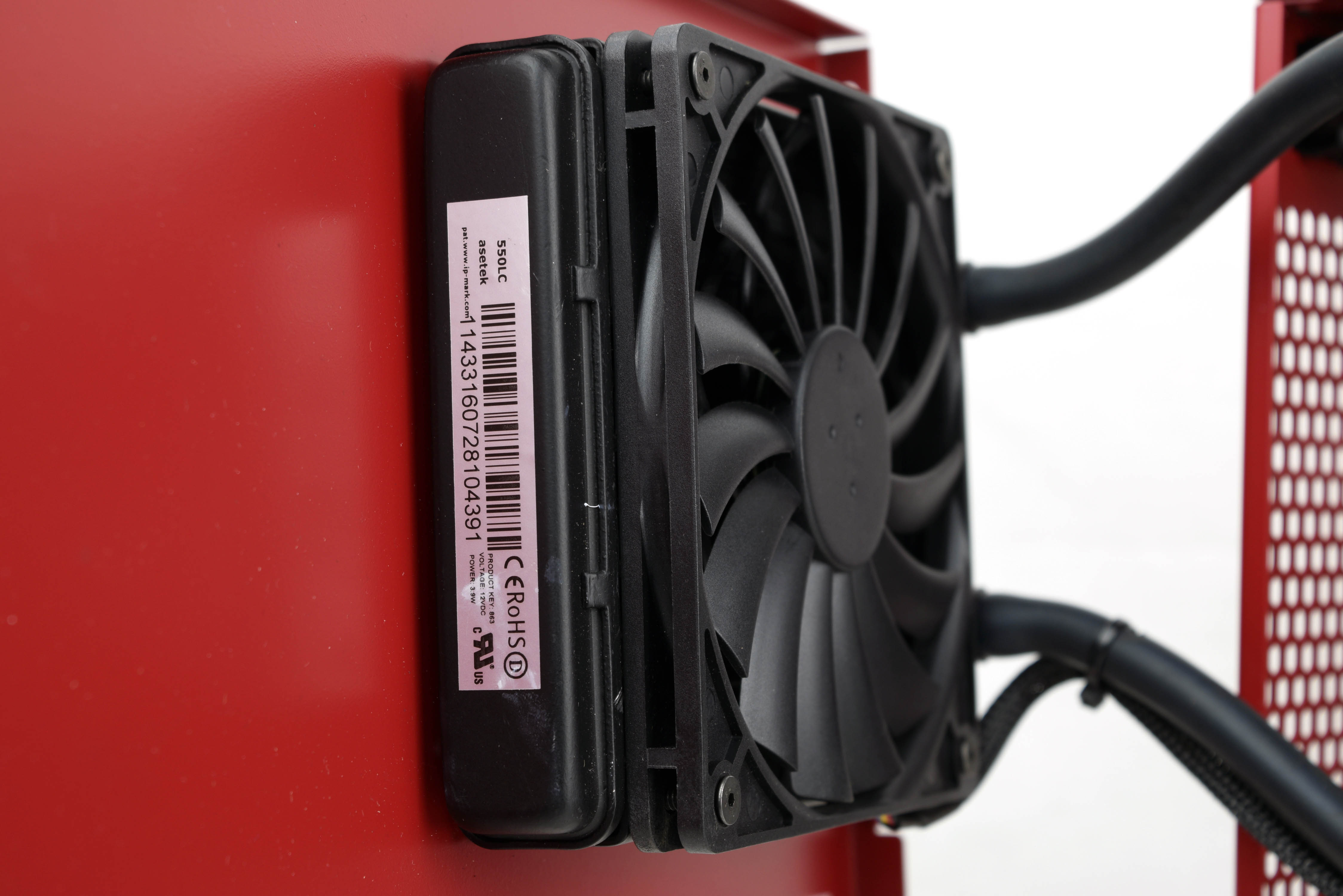
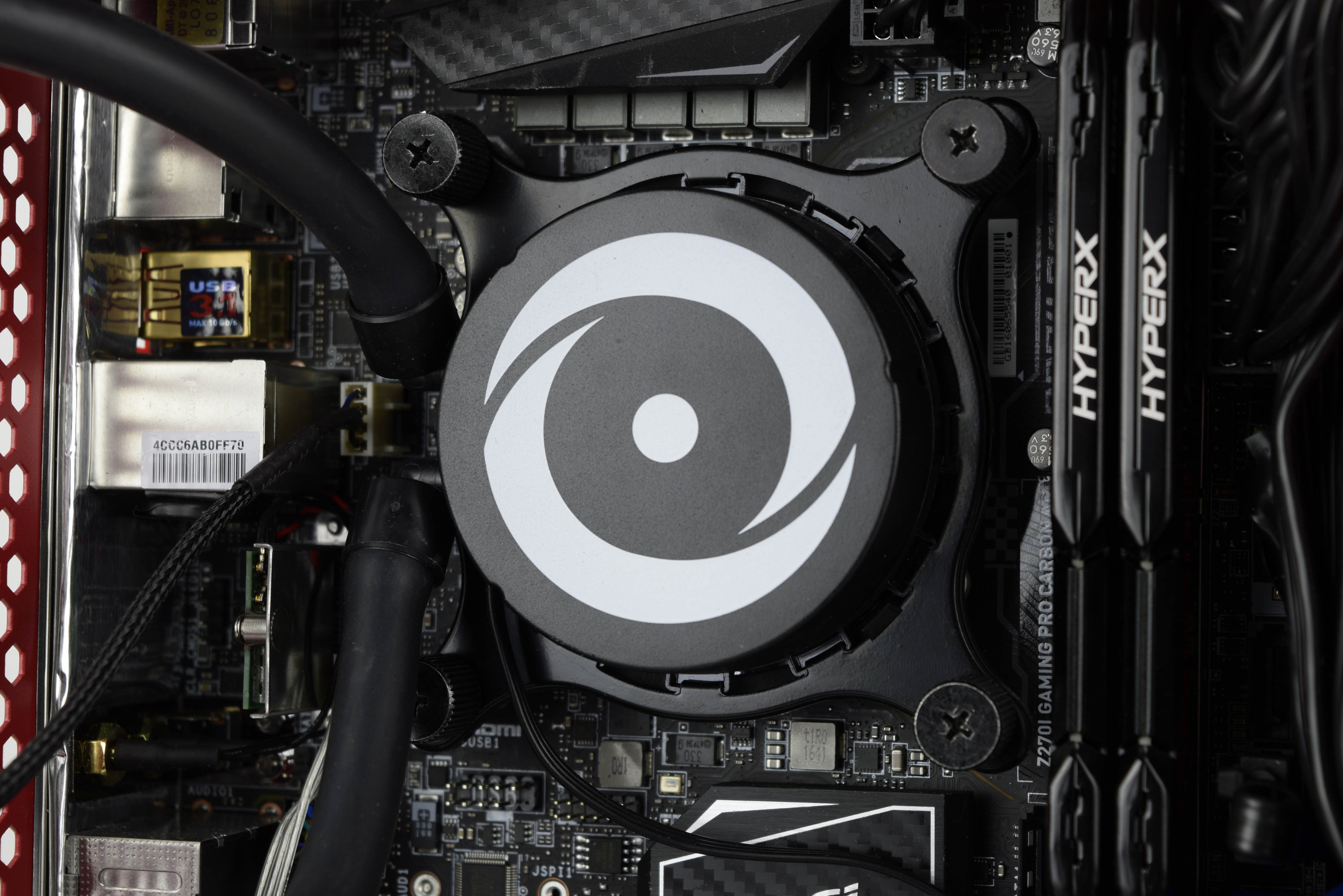
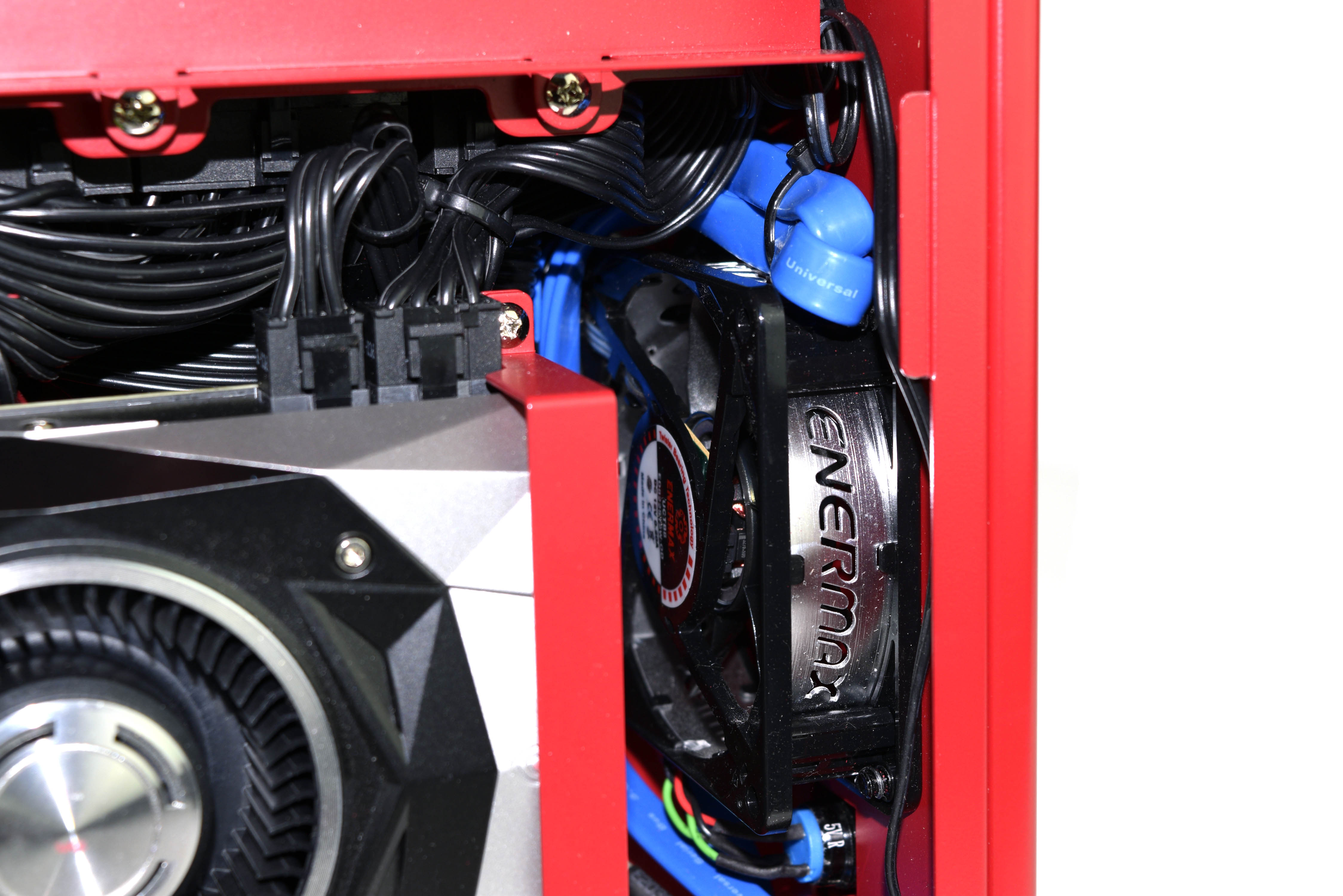
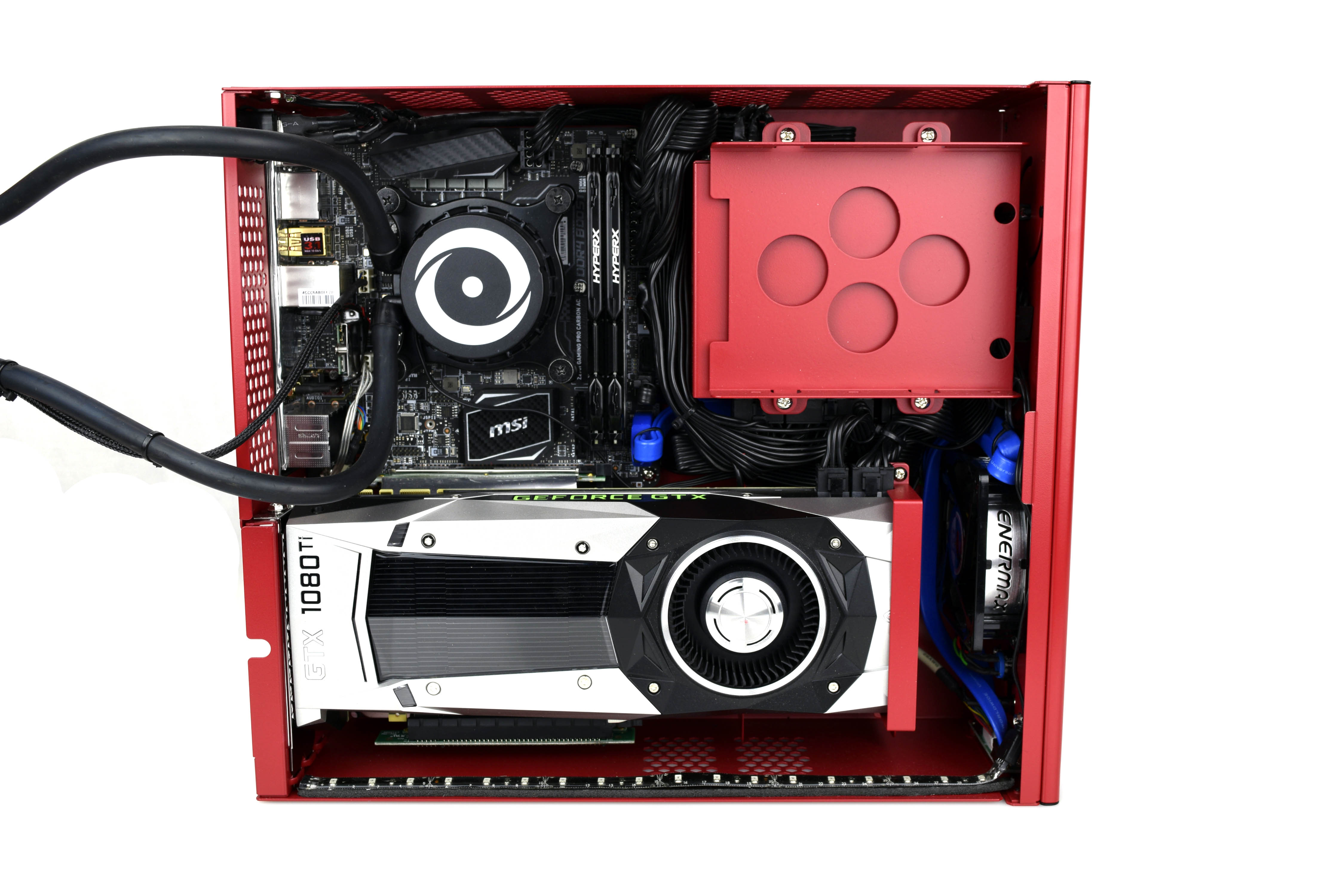
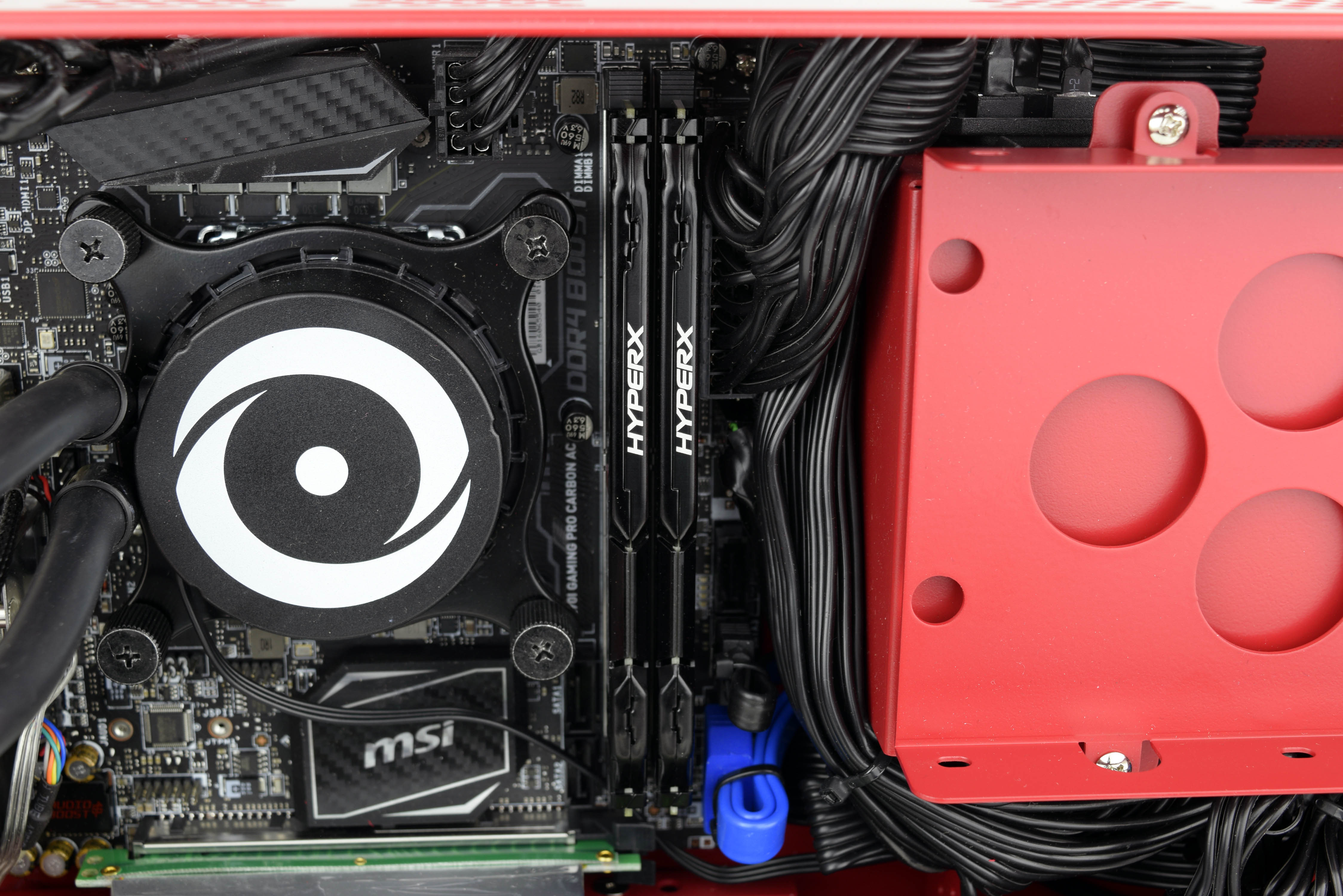
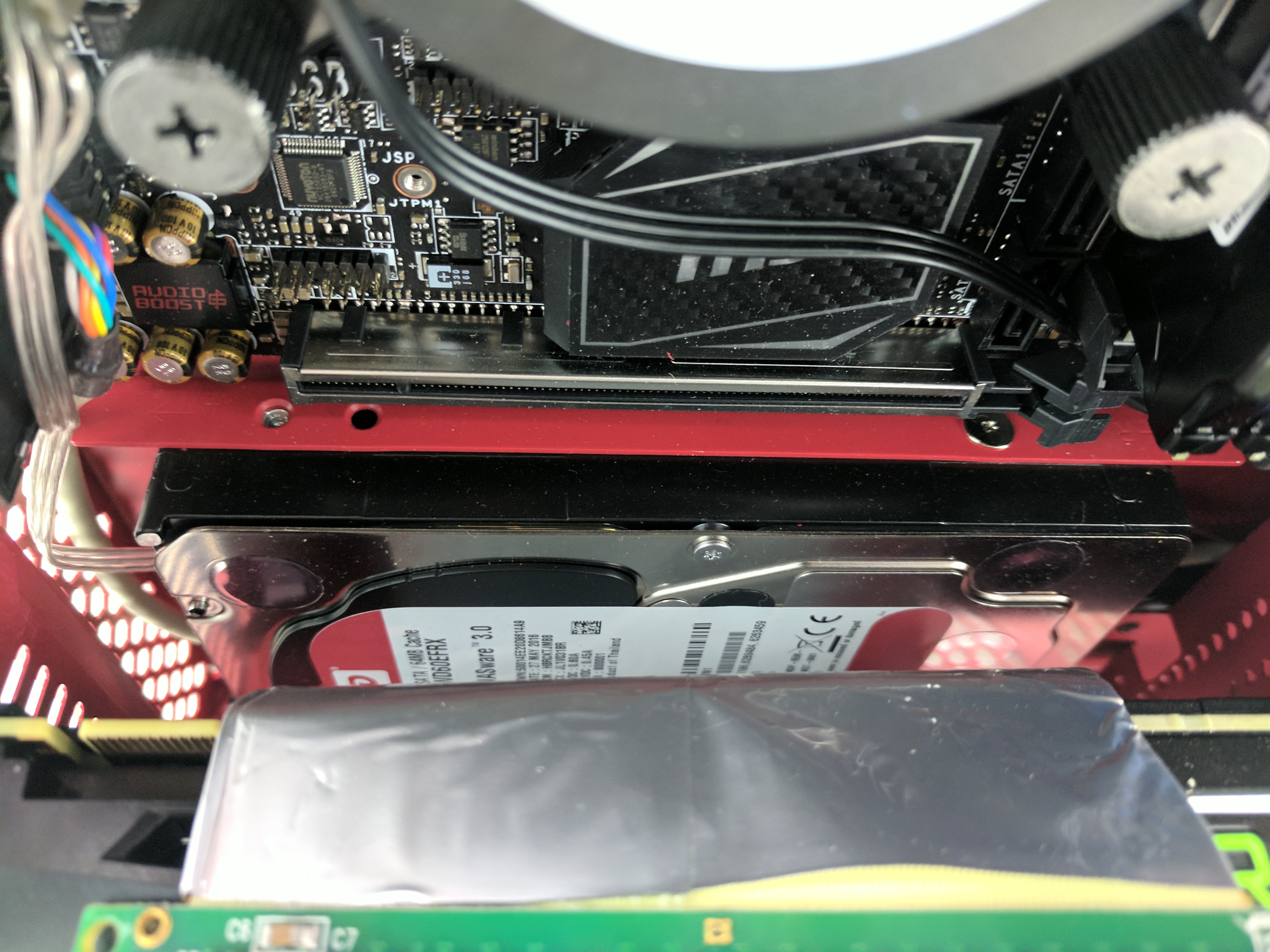
A 32GB (2 x16GB) kit of Kingston HyperX DDR4-2666 is seated in the motherboard’s only two DIMM slots. The 512GB Samsung 960 Pro M.2 NVMe SSD and the 6TB Western Digital Red HDD are difficult to see when you remove the Chronos’ only panel; the M.2 slot is located on the underside of the motherboard (you’ll have to take our word that it’s there; we didn’t see the need to disassemble the entire PC in order to photograph it), and the 3.5” HDD resides behind the graphics card (we used a cell phone with a good camera to capture the picture in the album above).
Get Tom's Hardware's best news and in-depth reviews, straight to your inbox.
The primary SSD’s capacity is par for serious gamers, but the 6TB HDD is a lot more extra space compared to most of the custom shop Z270 PCs we’ve recently tested, and the extra storage comes with a sizable premium. Surprisingly, there’s still room for more storage, with an empty 3.5” bay mounted above the 600W Silverstone SFX power supply (which is also hidden from view without significantly disassembling the system).
The Nvidia GeForce GTX 1080 Ti Founder’s Edition GPU is mounted upright with the use of a riser platform and a flexible PCIe x16 cable. The graphics card gets extra support from a beam in the chassis that is attached to the front of the GPU, and it lines up perfectly with the windowed panel’s vents. If the cooling design proves effective (on paper, it looks promising), the custom overclocked GTX 1080 Ti should provide top-tier gaming performance.

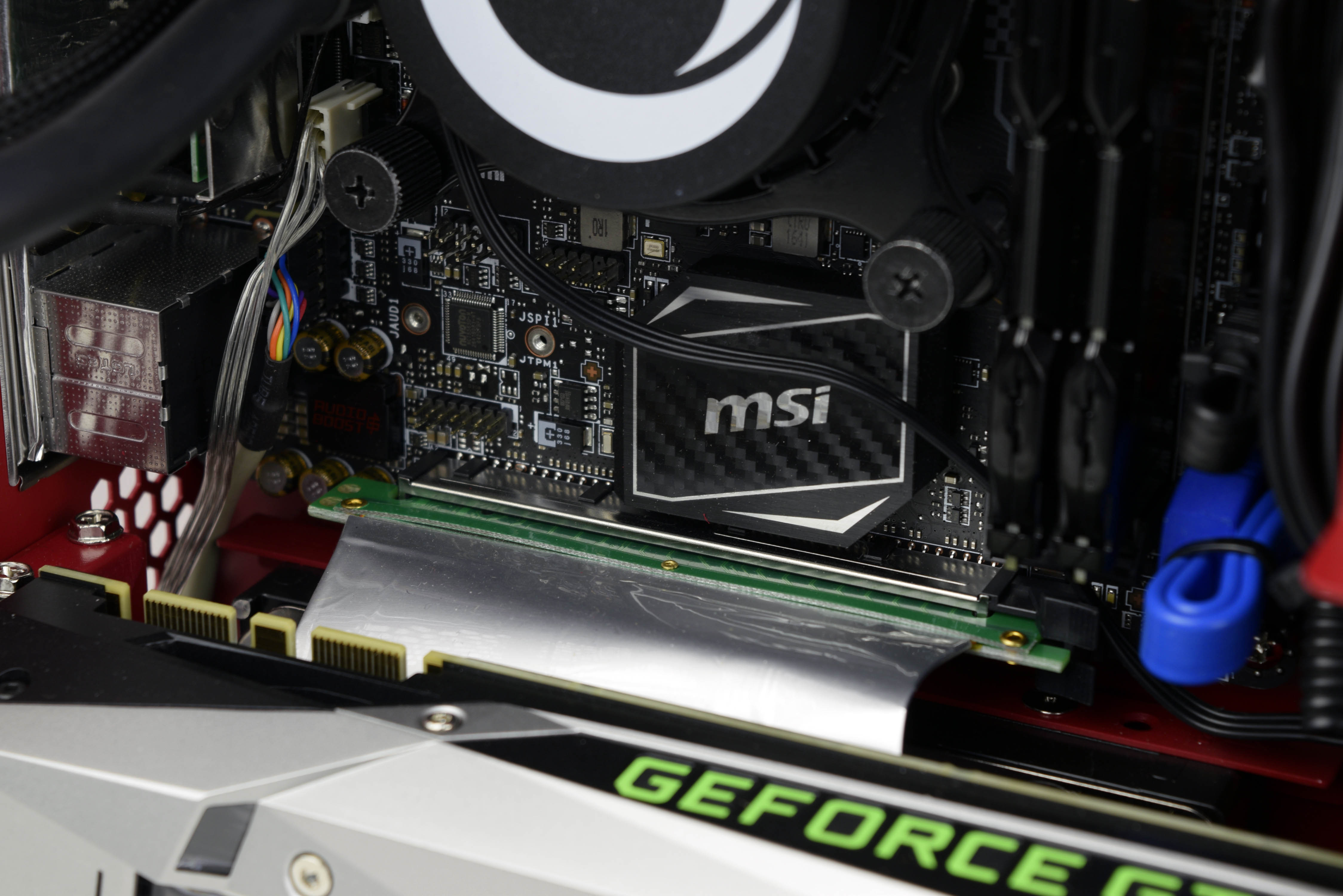
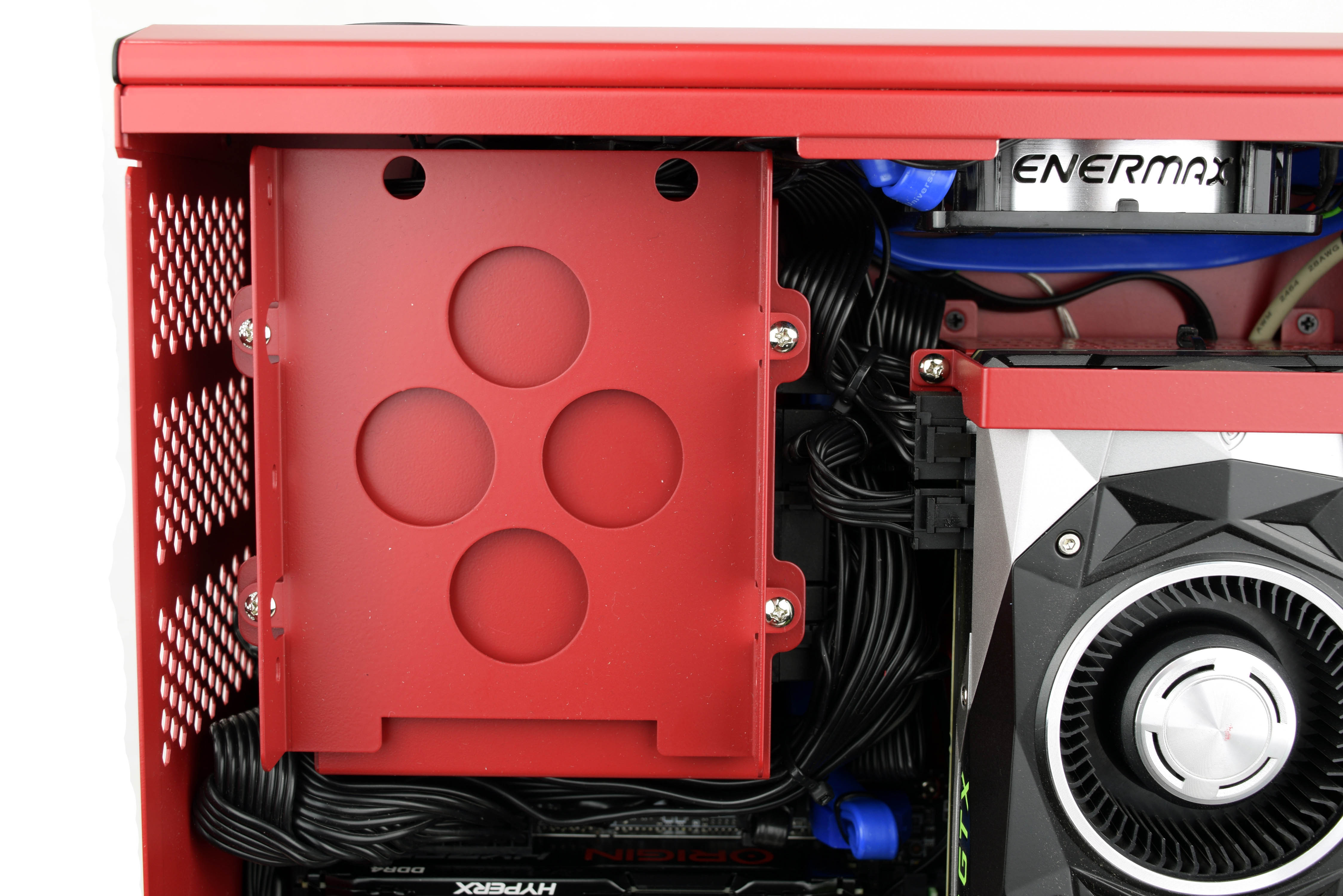
The cables are all neatly tucked with precision. Nothing looks messy (aside from one stray cable across the motherboard PCH that cannot be helped), there aren’t any bundles of extra cables crudely stuffed into an empty crevasse of the case, and everything seems to have a place despite the small form factor.
Software And Accessories
The Origin PC Chronos comes with an Origin t-shirt and a box filled with all of the component manuals and extra parts (including your power cable and Wifi antennas). The red LED light is a neat aesthetic bonus that adds another $20 to the total bill, but you could save a few bucks if lights aren't preferred. The system was shipped in a premium wooden crate, an add-on that can be purchased for an additional $42.
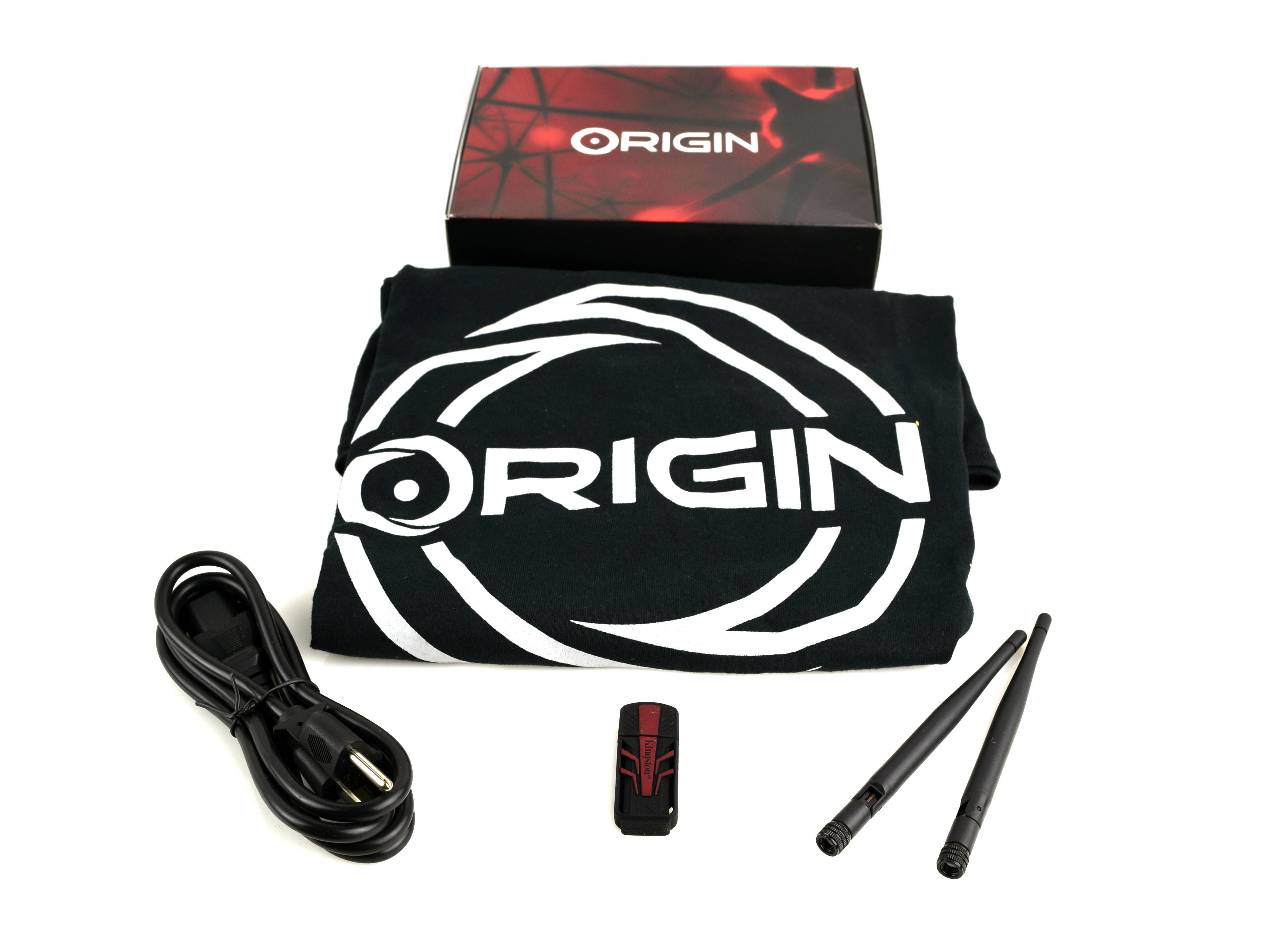
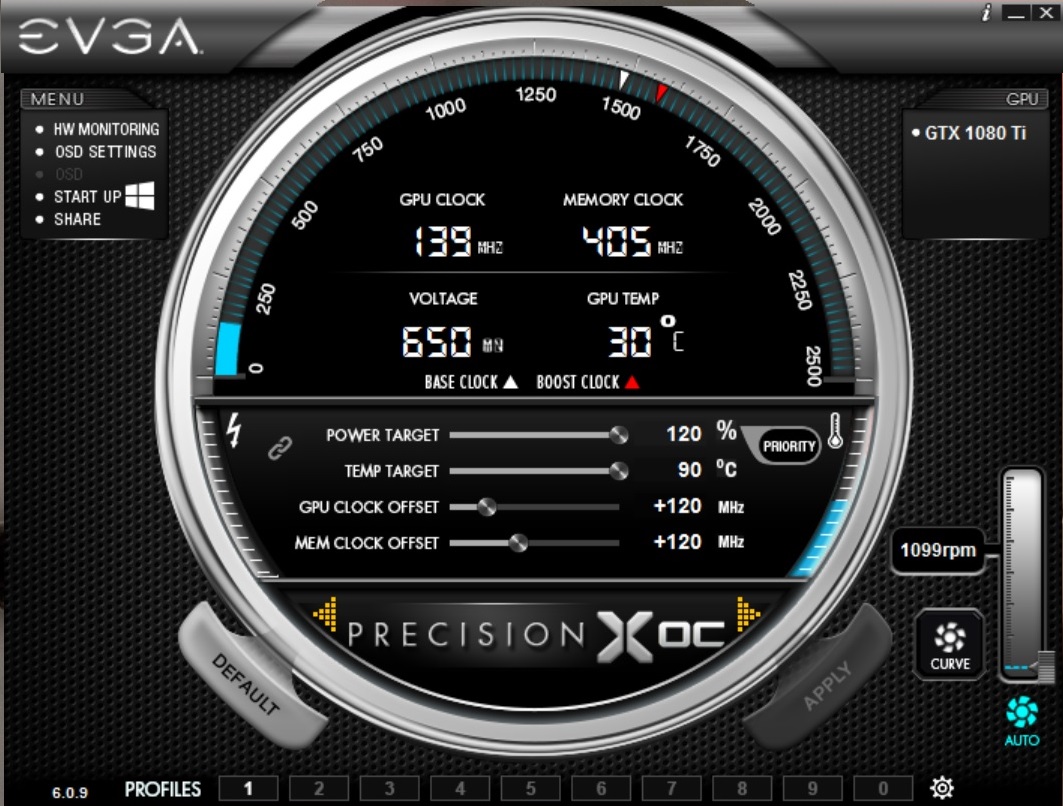
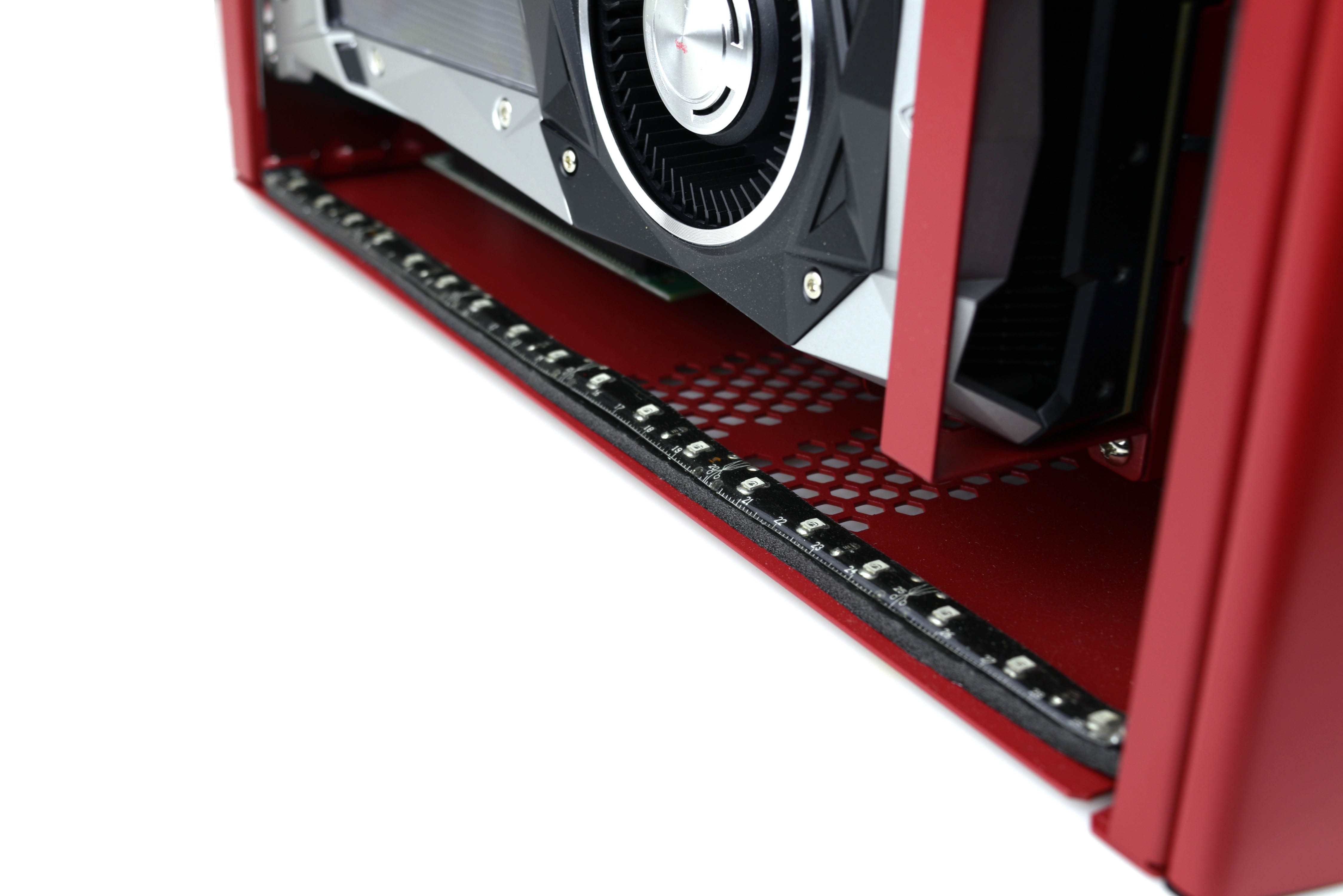
The Chronos doesn’t come with any pre-loaded software (trial or full version), but the company did install EVGA Precision X for overclocking the graphics card (for an added $50). Origin PC pushed the Founder’s Edition GTX 1080 Ti’s core and memory clocks by 120 MHz each, and the power and thermal limits have been maxed out. This should provide a quantifiable boost in performance, and the service ensures that you’ll squeeze out every drop of power from the hardware inside the Chronos.
MORE: Best PC Builds
MORE: How To Build A PC
MORE: All PC Builds Content
Derek Forrest was a contributing freelance writer for Tom's Hardware. He covered hardware news and reviews, focusing on gaming desktops and laptops.
-
nitrium "it's a worthy consideration for PC gamers looking for the absolute best if a budget is just a number and cash flow is comfortable."Reply
Is it though? -
daglesj Nice looking machine but could I really bring myself to buy a pre-built box? Half the fun of your own high end gaming rig is that you chose the parts and built it yourself. This sounds like defeat for many of us here.Reply -
Phaaze88 Prebuilt pcs are just pointless all around. It's cheaper to build custom, as well as being an enjoyable experience. I could see it being an option for folks who want a pc right now without having to look too much into it or the 'hassle' of setting it up. But after that's all said and done, the user is still left with maintenance themselves, and depending on what they splurged their $$$ on, maintenance can be simple, to an outright pain, especially if they didn't do their research beforehand. And if one somehow screws something up, i.e., a water leak via the AIO, that money sink goes poof!Reply -
photonboy Poor liquid cooler placement. Not only are they forced to use a SLIM FAN which would be noisier, but the hot air is blown out the SIDE which limits where you can put the case.Reply
Plus, it also distracts from the looks of the side of the case which is important in a boutique PC.
I would have used 2x120mm front intake fans with the intake vents HIDDEN so the front could look virtually the same (i.e. vents similar to PC's with a front door, so the front could wrap around the sides slightly and hide the vents running from bottom to top on both sides).
Then don't have any fan holes on the SIDES at all. You can keep the window for the graphics card to keep the same aesthetic.
Thus the case would look almost identical, but a cleaner design with airflow coming in the front, and going out the normal paths. -
daglesj Reply20241599 said:DaglesJ, you know, after 2 or 3 it starts getting old...
Nope...never! Been building em for 20 years.
Buying pre-built is giving up on life.
